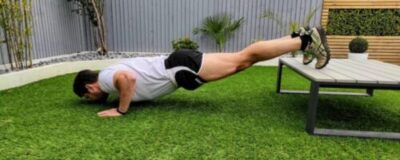For those passionate about bodybuilding, achieving a well-defined chest is often a top priority. It’s a standout feature that attracts many individuals to the gym.
There are a lot of chest exercises that you can use to build muscle, but some are more effective than others. Today I am going to tell you the best exercises to build chest muscle, along with my favorite isolation exercises that I finish each chest session with, to help get definition in my chest.
After telling, you the best chest exercises to build strength and muscle, I am going to give a workout plan identically to the plan I use to help you incorporate a mixture of compound and isolation exercises into your routine and get the best gains out of every chest workout you do.
Before I dive into exercises and workout plans, I am going to give you a break down of the muscles in the chest, so you have a better understanding, and know the exact area of the chest each exercise targets as I talk you through each exercise.
Understanding the Muscles of the Chest
Your pectorals are composed of two tissues, pectoral major and pectoral minor.
Pectoral Major
The pectoral major is the largest muscle in your chest, which connects the front of your chest with your upper arm and shoulder.
Pectoral Minor
The pectoral minor is a smaller, triangular muscle that sits beneath your pectorals major and attaches your ribs to your shoulder blade.
Despite your pectorals only being composed of two distinct tissues, they are assisted by other muscles, which are commonly engaged during the majority of chest exercises you perform.
Serratus Anterior
Your serratus anterior is a fan-shaped muscle that connects from your shoulder blade to your ribs. It runs along the side of the chest and helps move the shoulder blade forward and upward.
Subclavicus
The subclavicus is a small muscle just beneath the collarbone, that helps with stabilizing the shoulder joint.
Compound vs Isolation Exercises
All exercises can be broken down into 2 groups, they are either compound exercises or isolation exercise. It is important to understand the different between them, as you can incorporate certain exercises into your workout depending on your training goals.
Compound exercises are exercises that work multiple muscle groups at the same time, which makes them great exercises for building strength and muscle mass.
They are also very convenient, as by working multiple muscles at once, it can save you a lot of time when working out, whilst at the same time burning a lot more calories than isolation exercises, as they activate more muscle cells.
Isolation exercises are important exercises when correcting muscle imbalances as they directly target and strengthen a certain muscle.
As you can directly target certain muscles, if you feel like a certain part of your body is falling behind the rest of your body, you can concentrate directly on that muscle.
Both compound and isolation exercises are very important exercises in a workout routine, and if you want to build a nice physique, a balance of both compound and isolation exercises is essential.
Maximizing Muscle Growth with Compound Exercises
Compound exercises use multiple muscles at the same time to perform the movement, making them extremely good for building strength and gaining muscle.
Here are the best compound chest exercises that will maximize your muscle growth.
Flat Barbell Bench Press
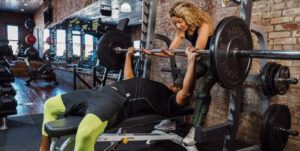
Barbell bench press is by far the most popular chest exercises in the gym and for good reason. It is a great compound exercise that works several upper body muscles.
The primary muscles worked are.
- Pectoral Major
- Front Deltoids
- Triceps
The secondary muscles worked are.
- Biceps
- Trapezius
- Rhomboids
- Latissimus Dorsi
- Forearms
- Core
How to perform barbell bench press…
- Load the barbell and lie on a flat bench with a barbell on the rack above you.
- Grab the bar with an overhand grip, about shoulder-width apart.
- Breathe in and lower the bar slowly until it lightly touches your chest.
- Push the bar back up explosively to the starting position as you breathe out.
When performing barbell bench press you should keep your lower back in a neutral position. Many athletes and bodybuilders arch their back, which helps them lift heavier weights and build strength. However, by keeping you back in a neutral position it will help you build a more aesthetically pleasing chest.
Flat Dumbbell Bench Press
The dumbbell bench press is very similar to that of the barbell bench press in terms off muscles used. The key difference between them is that you can use a lot more load using the barbell but with dumbbells can develop your pectoral muscles individually and get a proper squeeze at the top of the movement which can help increase muscle hypertrophy.
The primary muscles worked are.
- Pectoral Major
- Front Deltoids
- Triceps
The secondary muscles worked are.
- Biceps
- Trapezius
- Rhomboids
- Latissimus Dorsi
- Forearms
- Core
How to perform dumbbell bench press…
- Pick a pair of dumbbells and sit on the bench with them placed in the crease of your hips.
- Lie on the bench with the dumbbells still on your hips.
- Take a deep breath, and press the dumbbells to lockout at the top.
- Rotate your shoulders outwards, engaging your lats.
- Slowly lower the dumbbells until your upper arms are level with your back, and your lower arms form a 90-degree angle.
- Pause when you get to the bottom of the movement, before performing the next rep.
- Squeeze your chest at the top of the movement.
The dumbbell bench press is very similar to the barbell bench press, but it allows your shoulders and elbows to go through a bigger range of movement than the barbell bench press.
Incline Barbell Bench Press
Incline bench press is more difficult compared to doing flat or decline bench press, because it targets the upper pectoral muscles meaning you cannot engage the whole chest, making it a more challenging exercise.
The primary muscles worked are.
- Upper Pectoral Major
- Front Deltoids
- Triceps
The secondary muscles worked are.
- Biceps
- Trapezius
- Rhomboids
- Latissimus Dorsi
- Forearms
- Core
How to perform incline barbell bench press….
- Load the barbell and lie on the bench with your hips and upper back on the bench and your feet pushed into the floor.
- Grab the bar with an overhand grip, about shoulder-width apart.
- Breathe in and lower the bar slowly until it lightly touches your chest.
- Push the bar back up explosively to the starting position as you breathe out.
You can lift heavy loads and high volume using the incline bench press, which makes it a very effective compound exercise to build a strong, muscular chest.
Incline Dumbbell Bench Press
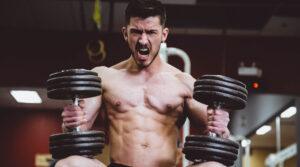
Just like the flat barbell and dumbbell bench press, the incline dumbbell press is very similar to the incline barbell press in terms of the muscles used.
The main difference is that the incline barbell press is done at a 45° angle, while the incline dumbbell bench press is performed at a 30° angle, meaning you use more of your front deltoids and upper pectorals when using a barbell than dumbbells.
Using dumbbells also takes more stability than using a barbell, and you can develop your pectoral muscles individually.
The primary muscles worked are.
- Upper Pectoral Major
- Front Deltoids
- Triceps
The secondary muscles worked are.
- Biceps
- Trapezius
- Rhomboids
- Latissimus Dorsi
- Forearms
- Core
How to perform incline dumbbell bench press….
- Get a bench and adjust it to an incline angle of 30°.
- Pick a pair of dumbbells and sit on the bench with them placed in the crease of your hips.
- Push the dumbbells up toward the ceiling, engaging your core.
- Rotate your shoulders outwards, engaging your lats.
- Slowly lower the dumbbells until your upper arms are level with your back, and your lower arms form a 90-degree angle, making sure you keep your elbows tucked rather than allowing them to flare outwards.
- Pause when you get to the bottom of the movement, before performing next rep.
- Squeeze your chest at the top of the movement.
The main difference being that the incline barbell press is at 45° angle and the incline dumbbell bench press is at a 30° angle, meaning you use more of your front deltoids and upper pectorals when using a barbell than dumbbells. Using dumbbells also takes more stability than using a barbell, and you can develop your pectoral muscles individually.
Decline Barbell Bench press
Decline bench press targets the lower pectoral muscles, and as the bench is in a decline position it places a lot let stress on your front deltoid muscles. This, combined with the shorter range of movement than performing flat or incline bench press, results in the ability to lift more weight.
The primary muscles worked are.
- Lower Pectoral Major
- Front Deltoids
- Triceps
The secondary muscles worked are.
- Biceps
- Trapezius
- Rhomboids
- Latissimus Dorsi
- Forearms
- Core
How to perform decline barbell bench press…
- Lie down with your eyes directly under the barbell, making sure your feet are secure at the end of the bench.
- Grip the bar with your palms facing forward, arms slightly wider than shoulder-width apart.
- Breathe in and lower the bar slowly until it lightly touches your chest.
- Push the bar back up explosively to the starting position as you breathe out.
When performing decline barbell bench press it is important to keep the correct form. It can be tempting to lift heavy weights, as I’ve been guilty of doing, but it’s important to prioritize technique to avoid potential injury.
Lifting heavy weights is good for building muscle but technique is more important, lifting weights that were too heavy meant that I bounced the bar off my chest to gain momentum, to the lift the barbell, which takes away the important factor of time under tension and also adds to the chance of injury.
Decline Dumbbell Bench Press
Similar to barbell and dumbbell flat, the main difference between decline dumbbell bench press and decline barbell press is that the dumbbell decline press requires more stability and the decline barbell press enables you to lift a much larger load.
The primary muscles worked are.
- Lower Pectoral Major
- Front Deltoids
- Triceps
The secondary muscles worked are.
- Biceps
- Trapezius
- Rhomboids
- Latissimus Dorsi
- Forearms
- Core
How to perform decline dumbbell bench press…
- Get a bench and adjust it to a decline angle of 15° to 30°.
- Pick a pair of dumbbells and lie on the bench with them, making sure your feet are secure at the end of the bench.
- Push the dumbbells up toward the ceiling, engaging your core.
- Rotate your shoulders outwards, engaging your lats.
- Slowly lower the dumbbells until your upper arms are level with your back, and your lower arms form a 90-degree angle, making sure you keep your elbows tucked rather than allowing them to flare outwards.
- Pause when you get to the bottom of the movement, before performing next rep.
- Squeeze your chest at the top of the movement.
Make sure the dumbbells do not collide at the top of each rep, as bouncing them together may cause you to lose stability within the shoulder and injure yourself.
Dumbbell Pullover
The dumbbell pullover is a unique exercise as it is one of the few exercises that simultaneously targets two opposing muscle groups.
The primary muscles worked are.
- Pectoral Major
- Latissimus Dorsi
The secondary muscles worked are.
- Triceps
- Teres Major
- Front deltoids
- Forearms
How to perform dumbbell pullover…
- Sit on the end of a bench, with your feet on the floor, slightly wider than the bench.
- Hold a dumbbell with both hands, and roll back so you are lying on the bench, making sure your back, neck, and head are fully supported.
- Extend your arms toward the ceiling, over your chest with your elbows slightly bent.
- Stop when your arms are facing directly towards the ceiling and squeeze your chest for a second.
- Inhale and extend the weights back, over your head to the starting position, making sure you keep your back and core strong throughout the movement.
Positioning is essential when performing dumbbell pull overs, as when you position your arms and elbows in a certain way, you will target your pecs, but when you make a few key adjustments, you will place more tension on your lats.
Chest Press Machine
The chest press machine is an effective machine to build chest muscle. It is not as effective as bench press, as the machine guides you through the movement, but bench press requires extra effort to balance the bar and support the weight.
The Primary muscle used is…
- Pectoral Major
The secondary muscles worked are.
- Triceps
- Front Deltoids
How to use chest press machine…
- Grip the handles with your thumb circled around the handle.
- Exhale and push outward until your arms are fully extended, whilst maintaining a neutral wrist position with your wrists in line with your forearm.
- Pause briefly at end of the movement, then bend your elbows and return to the starting position.
Despite being less effective than the bench press, the chest press machine is still a very good exercise to add to your workout plan, as it is a lot safer and easier to learn than bench press.
Isolation Exercises for Chest Definition
Cable Fly Cross Over
The cable fly crossover is personally, the best chest isolation exercises, as you can keep the pectoral muscles under constant tension, leading to muscle growth.
How to perform chest fly cross over…
- Adjust handles to shoulder height, loaded with a resistance you are comfortable with.
- Grab the handles and hold them out to the side of your body with your palms facing forward.
- Take a step forward with 1 foot so your feet are staggered with 1 foot in front of the other to increase tension.
- Drive the hands forward and together in an arcing motion allowing the hands to pass with one hand above and one below.
- Squeeze your pecs for a second and then return to starting position in reverse motion.
Cable machines also make it easy to overload your muscles by starting with a low weight and increasing it, as we as making it easy to do drop sets which increases muscle hypertrophy by activating muscle fibers to their full potential.
Low Cable Fly Cross Over
The low cable fly cross over is also a very good chest isolation exercise, which targets the upper and inner regions of the pectoral muscles.
How to perform lower cable fly cross over…
- Adjust handles to low position, loaded with a resistance with which you are comfortable.
- Grab the handles and hold them out to the side of your body with your palms facing forward.
- Take a step forward with 1 foot so your feet are staggered with 1 foot in front of the other to increase tension.
- Bend your arms and move your hands upward to the middle of your body.
- Squeeze your pecs for a couple of seconds and then return to starting position in reverse motion.
The cable machine provides constant tension throughout the entire range of motion, which keeps the muscles under tension for a longer period of time, which works many small stabilizing muscles in your chest in addition to the pectoral muscles, leading to increased muscle growth.
Dumbbell Chest Fly
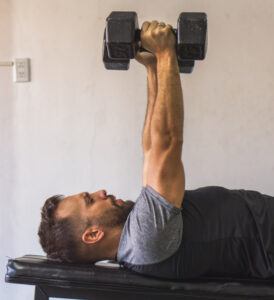
The dumbbell chest fly is a chest isolation exercise that primary works the pectorals and deltoids, whilst also engaging the triceps and biceps.
How to perform dumbbell chest flies…
- Lie back on a bench, then press the dumbbells up, directly above your chest, facing towards each other, with your elbows slightly bent and a neutral grip.
- Push your shoulder blades back into the bench to set your shoulders and keep your feet on the ground,
- Lower the weights down to the sides, using your shoulders.
- Lower arms down until you feel a stretch on your chest.
- Squeeze your pecs to raise the weights back up to the starting position.
- Hold position at top, continuing to squeeze your pecs and then return to the starting position.
Make sure you use your chest muscles to lift the weights, not your arms, to ensure that your pecs are consistently under tension for a thorough workout.
Incline Dumbbell Chest Fly
The incline dumbbell chest fly is a chest isolation exercise that primary works the upper pectoral and deltoids, whilst also engaging the triceps and biceps.
- Adjust bench to an incline angle of 30 degrees.
- Lie back on a bench, then press the dumbbells up, directly above your chest, facing towards each other, with your elbows slightly bent and a neutral grip.
- Push your shoulder blades back into the bench to set your shoulders and keep your feet on the ground,
- Lower the weights down to the sides, using your shoulders.
- Lower arms down until you feel a stretch on your chest.
- Squeeze your pecs to raise the weights back up to the starting position.
- Hold position at top, continuing to squeeze your pecs and then return to the starting position.
Just like flat dumbbell chest flies, it is important to make sure you use your chest muscles to lift the weights, not your arms, to ensure that your pecs are consistently under tension for a thorough workout.
Chest Fly Machine
The chest fly machine is an ideal machine for building the pectoral major, as it is easy to perform and directly targets the pectoral muscles.
How to use the chest fly machine…
- Sit down and grip both handles firmly with your thumb circled around the handle.
- Bring the handles together slowly, squeezing your pecs
- Hold in the middle and squeeze pecs for a couple of seconds and move your arms back to the starting position.
The chest fly machine is a great way to finish a chest workout, as you can use it to fatigue the chest after a heavy workout, which I have done for many years.
Pec Dec Machine
The pec dec machine is a great machine for increasing muscle mass in your pectoral muscles and enhancing chest support.
How to use the pec dec machine…
- Sit down and place your arms against the pads facing inwards.
- Bring the handles together slowly, squeezing your pecs.
- Hold in the middle and squeeze pecs for a couple of seconds and move your arms back to the starting position.
The Pec deck machine is similar to the chest fly machine but provides a greater range of motion in the closed position, whereas the chest fly machine provides a greater range of movement in the open position.
Creating Your Chest Workout Plan
Here is a chest work out plan that I am currently using myself, and have used many times before to increase chest strength and muscle mass. It contains a combination of 3 compound exercises and 2 isolation exercises to maximize muscle growth.
For compound exercises you should aim for 6-8 rep range, to increase strength and muscle mass and for isolation exercises, aim for 10-12 rep range, to promote muscle hypertrophy.
| Exercise | Sets | Reps Range |
|---|---|---|
| Flat Barbell Bench Press | 4 | 6-8 |
| Incline Dumbbell Bench Press | 4 | 6-8 |
| Decline Barbell Bench Press | 4 | 6-8 |
| Pec Dec | 4 | 10-12 |
| Cable Fly Cross Over Machine | 4 | 10-12 |
It is important to perform each exercise with the correct form, and squeeze the chest muscles for a second at the top of each exercise to maximize muscle hypertrophy.
Conclusion: Achieving Your Dream Chest
In this article, we’ve explored a range of chest exercises, covered the importance of both compound and isolation exercises, and created a comprehensive workout plan to maximize your chest’s strength and definition.
Whether you are just starting out as a bodybuilder or are a fitness fanatic, incorporating these principles and exercises into your workout routine can help you achieve the impressive chest you desire. The path to achieving your dream chest is now clearer than ever.
However, no matter what chest workout you perform, it is essential to combine it with a good diet to match your training goals. There are also many supplements on the market to help you achieve your dream chest.
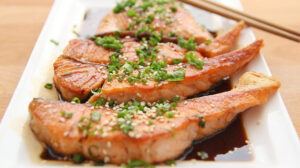
I have written the following articles that will help you to create the perfect combination of training, dieting and supplementation, to ensure you get best gains you can achieve.
- Fueling Your Gains: The Ultimate Guide to Nutrition for Lean Muscle Building
- Top Supplements for Building Lean Muscle.
- Benefits and Side Effects of Creatine Monohydrate.
Now that you have the tools and knowledge, it’s time to take action. Hit the gym, apply these exercises, and watch your chest transform. Don’t forget to maintain a balanced diet and explore the possibilities of supplements for optimal results.
Feel free to leave any questions or comments below, and share this article with others who share your passion for bodybuilding. Your dream chest is within reach. Stay dedicated, and you will see the results you desire.
